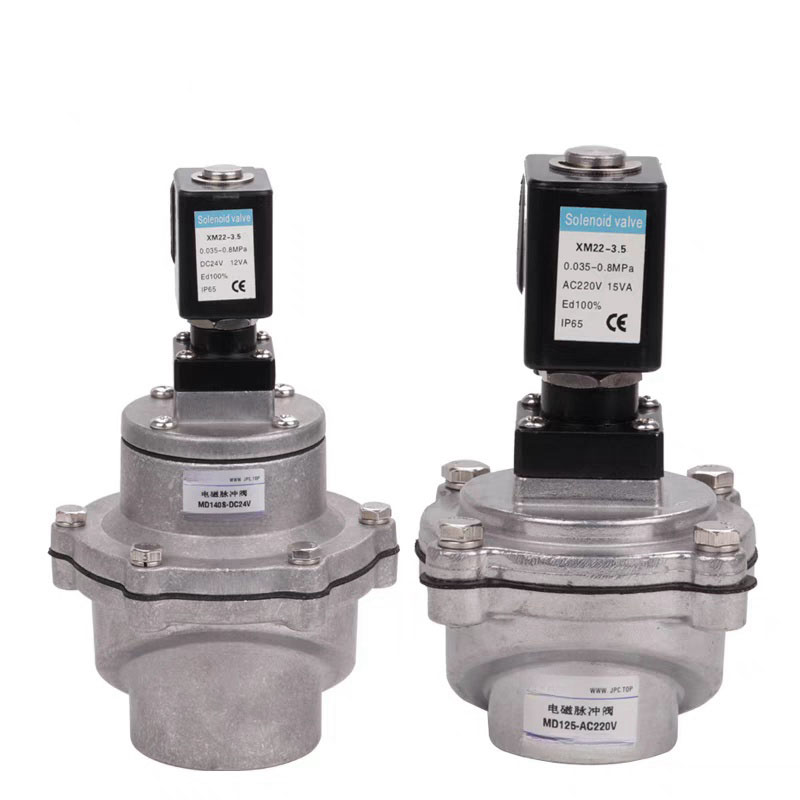The Critical Role of Pulse Valves in Dust Collection Systems
2025-02-28
Dust collection systems play a vital role in maintaining air quality and ensuring workplace safety in various industries, including manufacturing, pharmaceuticals, and mining. At the heart of these systems lies a key component: the pulse valve. This essential device ensures the effective removal of dust by controlling the release of compressed air to clean filter bags or cartridges. Understanding the function, benefits, and maintenance of pulse valves is crucial for optimizing dust collection performance.
1. What Are Pulse Valves?
Pulse valves are high-performance solenoid valves that regulate short bursts of compressed air in dust collection systems. These pulses dislodge accumulated dust from filter media, allowing for continuous and efficient operation. Pulse valves typically operate in milliseconds, ensuring rapid and effective cleaning cycles.
2. How Pulse Valves Enhance Dust Collection Efficiency
Pulse valves contribute significantly to the overall efficiency of dust collection systems in several ways:
- Optimized Air Consumption: By delivering precise bursts of air, pulse valves minimize air usage while maintaining high cleaning performance.
- Improved Filter Life: Regular pulse cleaning prevents excessive dust buildup, extending the lifespan of filter bags and cartridges.
- Consistent Airflow: Efficient dust removal enhances airflow, maintaining stable system performance and reducing pressure drops.
- Energy Savings: A well-maintained pulse valve system reduces the need for excessive fan power, leading to lower energy consumption.

3. Key Considerations for Selecting Pulse Valves
When choosing a pulse valve for a dust collection system, several factors must be considered:
- Valve Type: Common types include diaphragm and solenoid valves, each with specific advantages based on system requirements.
- Operating Pressure: Ensure the valve is rated for the system's required air pressure to maintain optimal performance.
- Response Time: Faster response times result in more effective pulse cleaning cycles.
- Material Durability: Valves should be constructed from materials resistant to corrosion and wear for prolonged reliability.
4. Maintenance and Troubleshooting
Regular maintenance is essential for the longevity and performance of pulse valves. Key maintenance practices include:
- Inspecting for Leaks: Check for air leaks that may compromise cleaning efficiency and increase energy costs.
- Cleaning or Replacing Diaphragms: Worn or damaged diaphragms can lead to inconsistent pulse performance.
- Checking Electrical Connections: Ensure solenoid connections are secure to prevent operational failures.
- Monitoring System Performance: Unusual pressure drops or ineffective dust removal may indicate valve malfunction.
5. Future Trends in Pulse Valve Technology
Advancements in pulse valve design are improving efficiency and reliability. Some emerging trends include:
- Smart Valves with IoT Connectivity: Real-time monitoring and predictive maintenance capabilities enhance system management.
- Energy-Efficient Designs: Innovations in valve construction are reducing compressed air consumption and operating costs.
- Enhanced Materials: The use of advanced polymers and corrosion-resistant alloys extends valve durability in harsh environments.
Conclusion
Pulse valves are indispensable components of dust collection systems, ensuring effective dust removal, improved air quality, and prolonged filter life. By understanding their function, selecting the right valve, and implementing proper maintenance, industries can optimize their dust collection efficiency and reduce operational costs. As technology evolves, smarter and more efficient pulse valves will continue to enhance dust management solutions across various applications.


